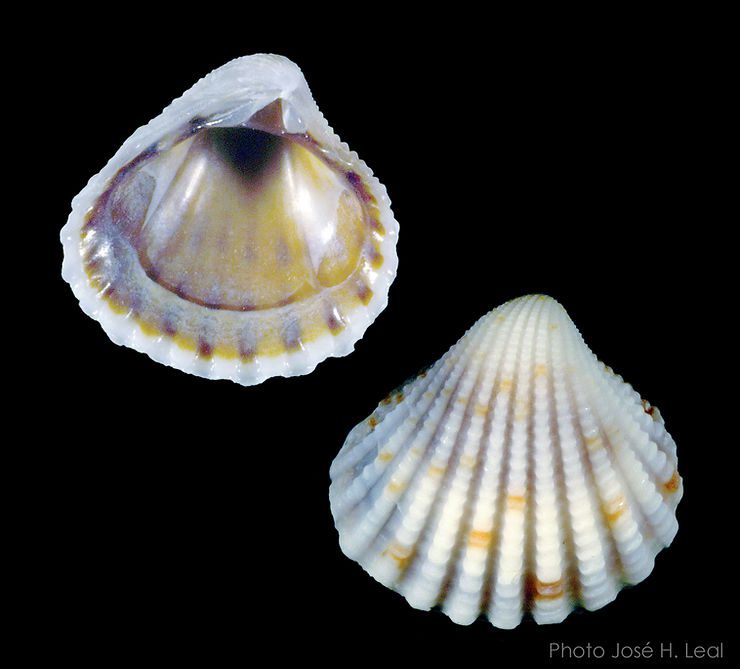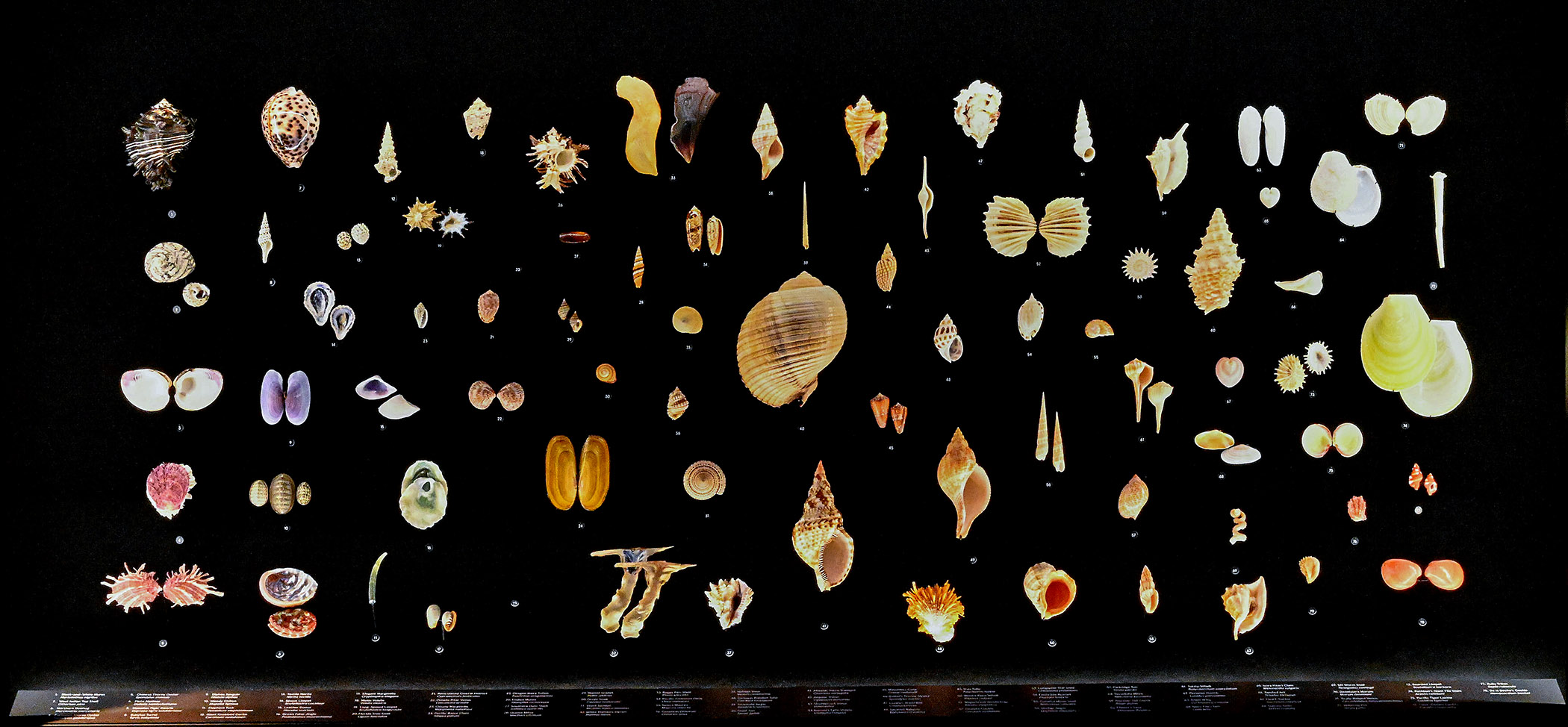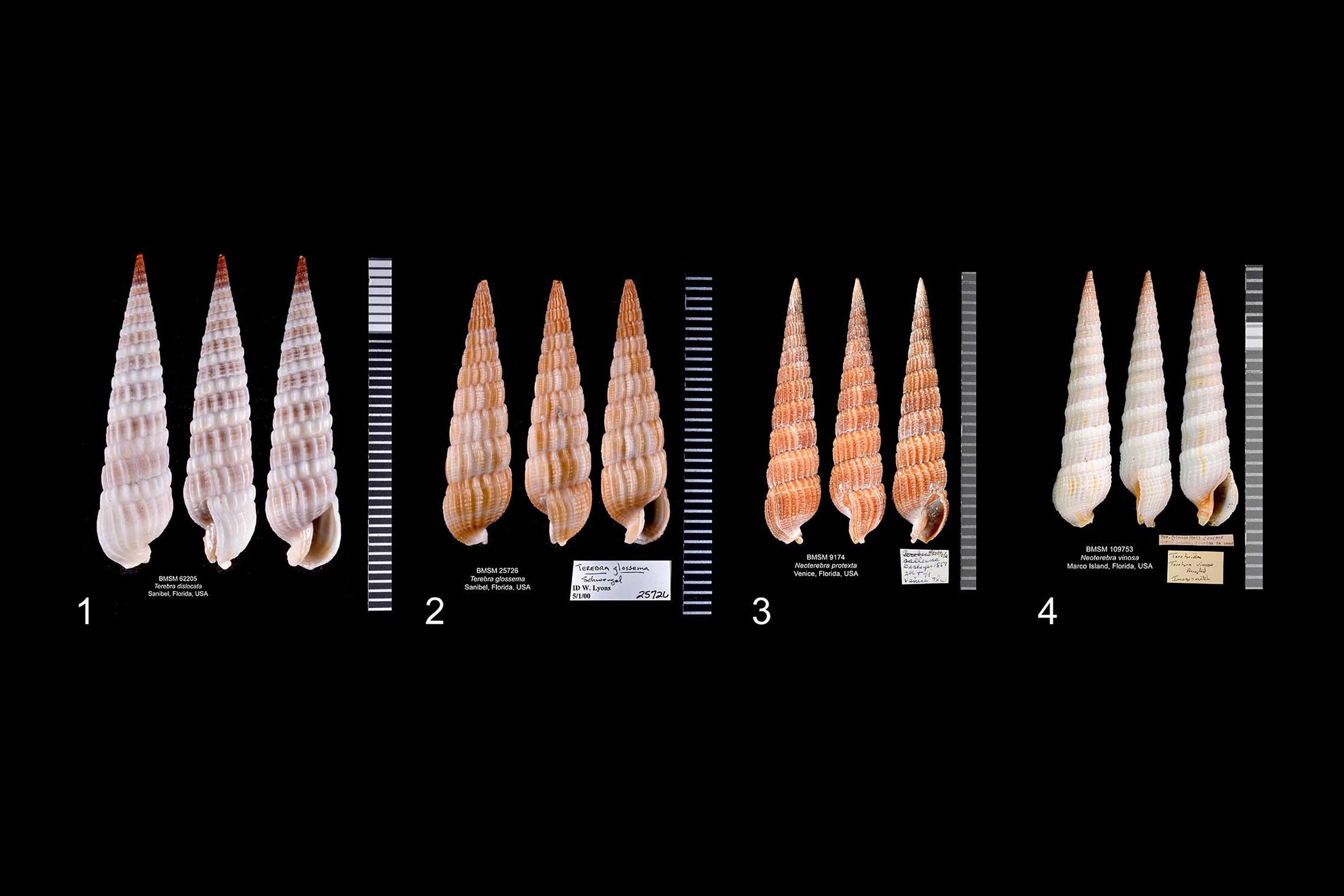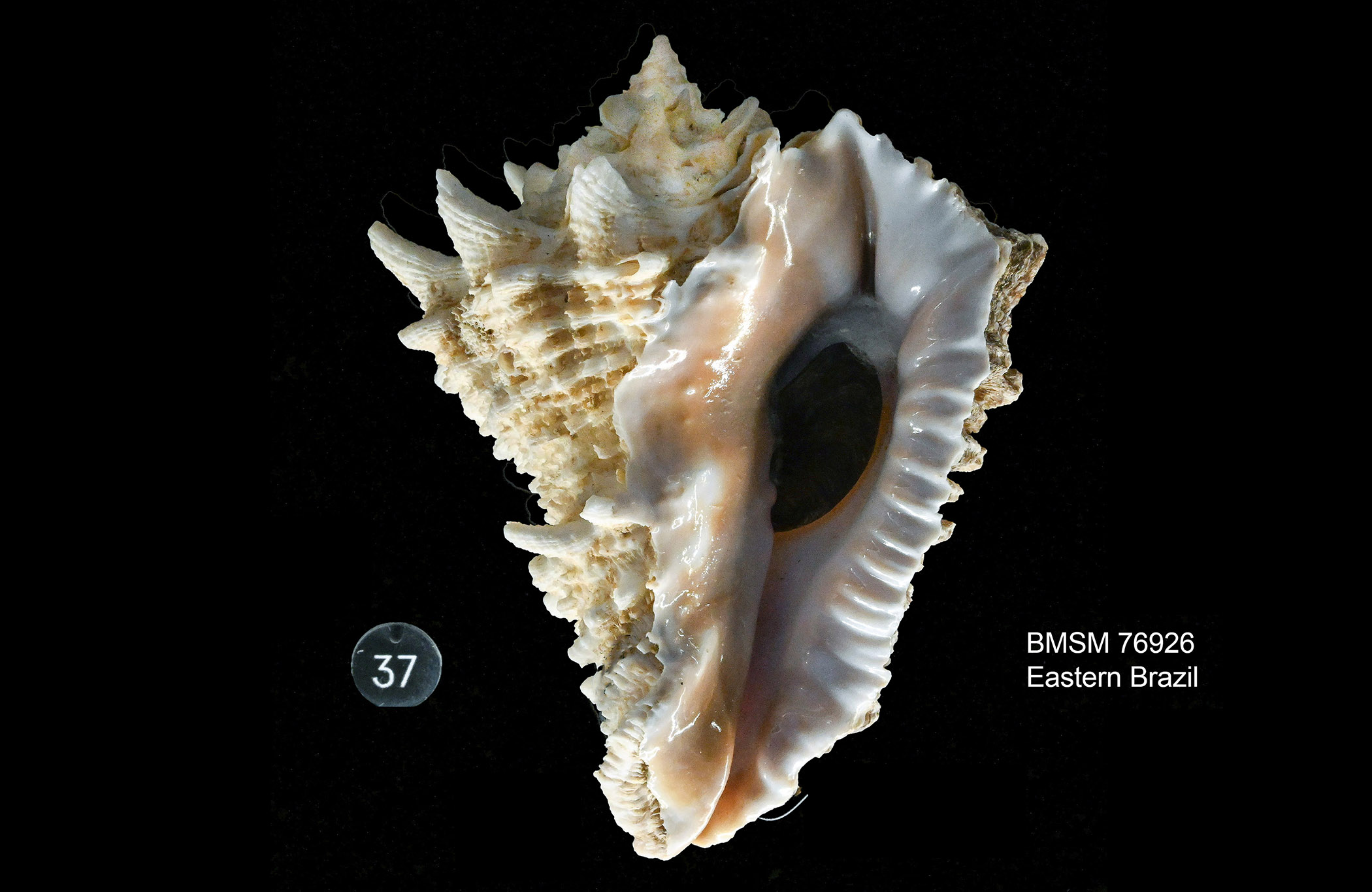Barely reaching quarter-inch, the Three-tooth Carditid, Pleuromeris tridentata (Say, 1826), belongs to the group of relatively abundant but seldom collected small, local bivalves. This species belongs in the same family (the carditidae) as last week’s featured shell, the Broad-ribbed Carditid. The shell is inflated, triangular, and relatively thick, with a characteristic sculpture of 15 to 18 strongly beaded radial ribs. (In bivalve shell terminology, radial applies to sculptural elements arranged from the shell beak toward its margin.) The specific name, tridentata, alludes to the presence of three teeth on the shell hinge. These teeth are usually stained purplish-blue. The shell color is grayish brown to bright-pink, at times with light-brown specks or mottling.

The Three-tooth Carditid, Pleuromeris tridentata, from Sanibel. Photo by José H. Leal.


